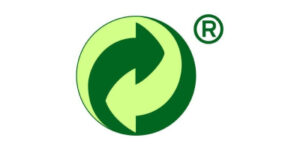Labels you should include in your packaging design
While 3 out of 4 Australians think regularly recycling is the most impactful thing they can do for the environment, 50% of Australians still find knowing what can and can’t be recycled confusing. Given that Australians look to product packaging as the most common source of recycling information, it is important that brands include proper disposal information on pack.
There are multiple different labels and it can be confusing which ones are the most relevant for you. Below, we cover which labels should and should not be used.
Australasian Recycling Label (ARL):
The Australasian Recycling Label (ARL) is an on-pack label that assists consumers in recycling correctly. Currently, there are more than 330,000 SKUs carrying the ARL across Australasia. 75% of Australians have expressed that they think it’s a great idea and want to see it on all packaging.
See example below:

Due to the comprehensive instructions and high levels of standardisation and governance, we recommend the ARL as the best practice when it comes to disposal instructions. To feature the ARL logo on their products, brands need to be APCO members and meet specified requirements. For more information, visit the APCO website: APCO – Australasian Recycling Label.
Mobius Loop:

The mobius loop is commonly used to represent that a product is recyclable. However, there is no regulation or guidance on the use of this logo. Therefore, brands in Australia and New Zealand are encouraged to utilise the ARL instead as this generic recycling label does not provide specific instruction on recycling or disposal.
Tidy man:

Often misunderstood as a recycling symbol, its purpose is to remind consumers to dispose of items in the rubbish bin to prevent littering.
Green dot:

Signifies that the company producing the product makes financial contribution to recycling schemes but does not guarantee the recyclability of the product.
Home compostable certification (AS 5810):
![]()
Administered by the Australasian Bioplastics Association (ABA), the voluntary verification scheme tests whether a product can breakdown within specific timeframes without toxic effects to plants, compost or earthworms in a home composting environment.
This demonstrates that the certified product can be home composted.
Learn more: ABA Certification.
Plastics Identification Code:
![]()
Identifies the material type and relies on consumers knowing local disposal methods around them based on plastic types.
Embracing best practices:
We recommend the ARL as the best on-pack practice due to the clear instructions which help reduce contamination and mistakes while recycling, as well as the increasing levels of adoption from consumers. Find out more about the Australasian Recycling Label (ARL).
Resources:
Australasian Recycling Label Consumer Insights Report, APCO, 2023
The packaging ranges previously sold by Closed Loop, plus much more, can now be sourced through PAC Trading. Contact PAC via email at dispatch@pactrading.com.au or their website https://www.pactrading.com.au.








